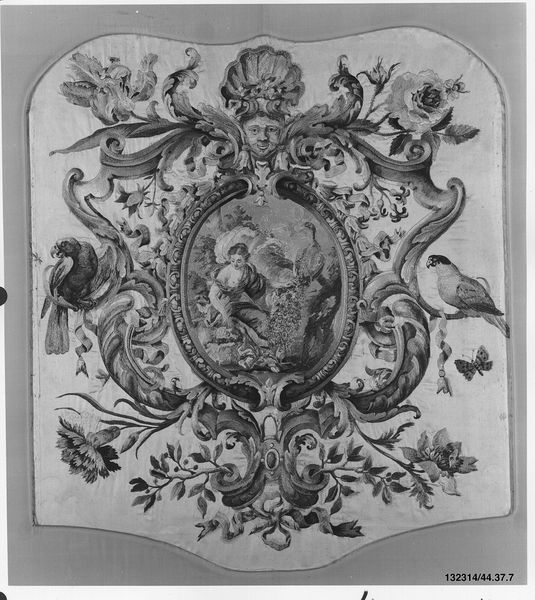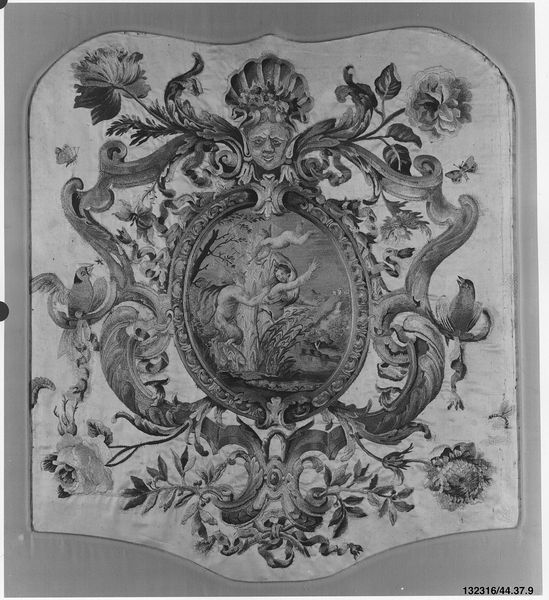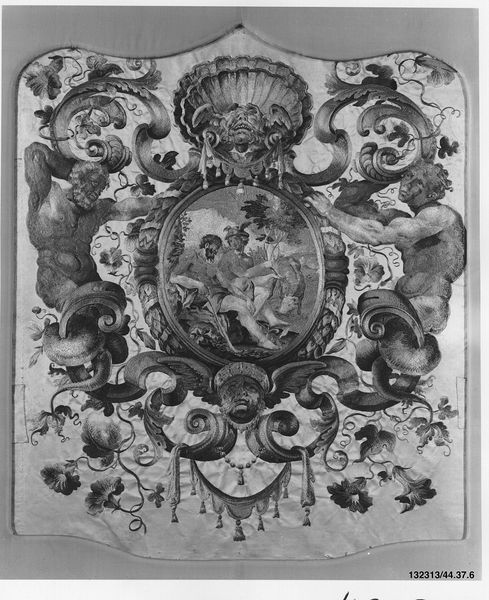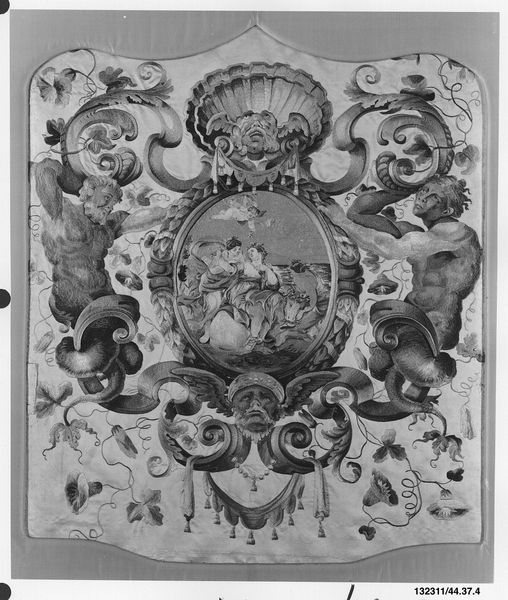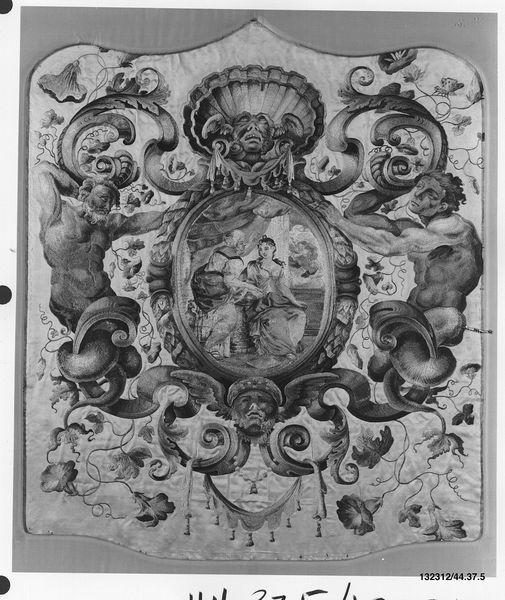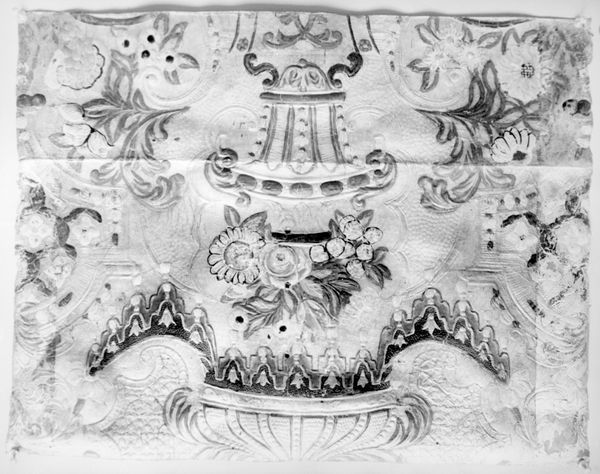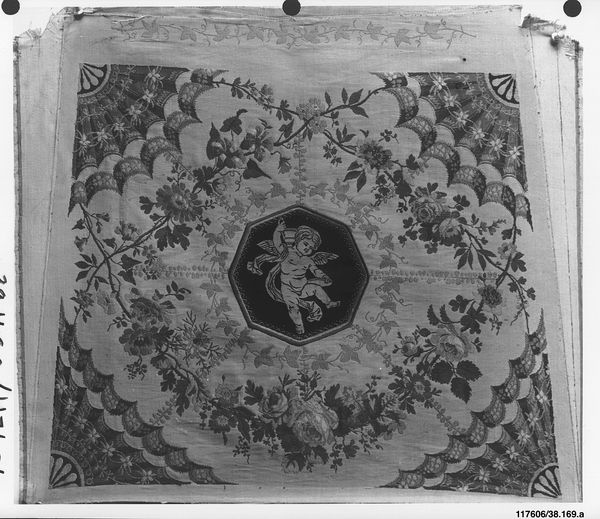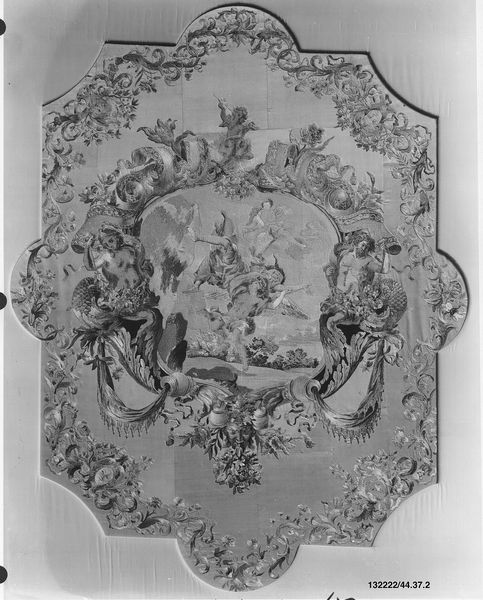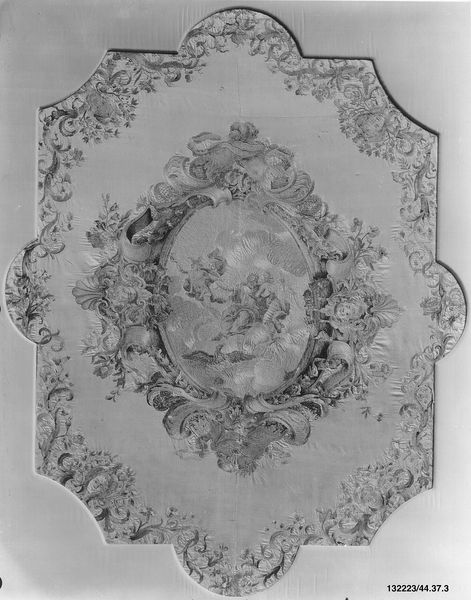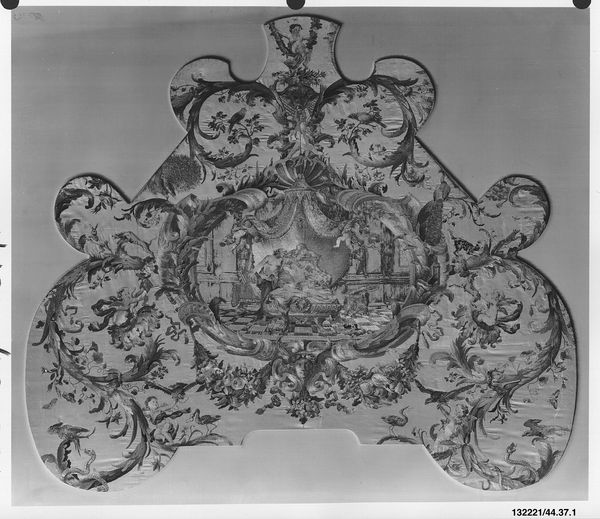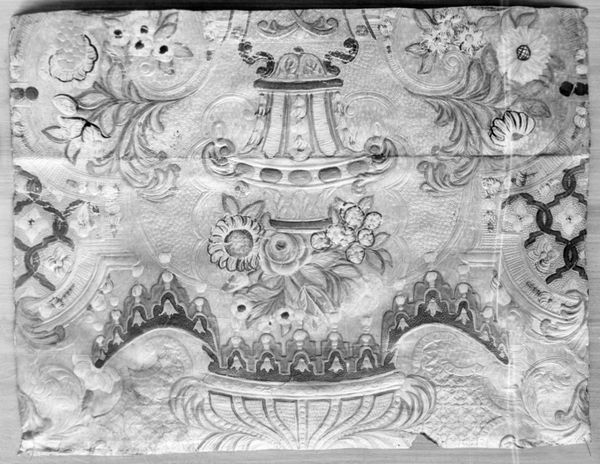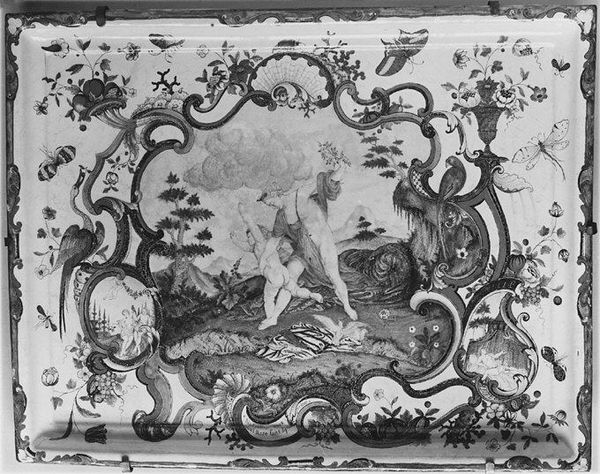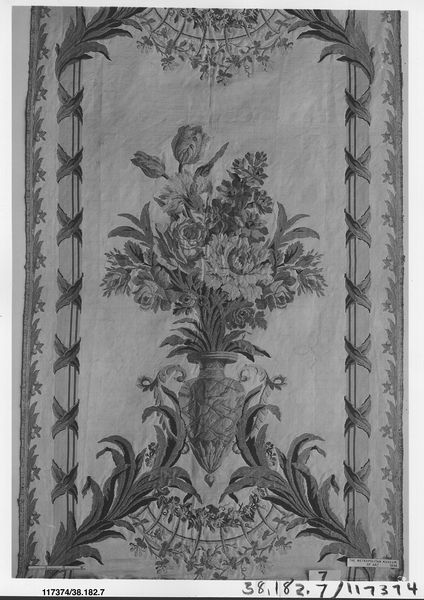
drawing, textile, sculpture, engraving
#
drawing
#
baroque
#
bird
#
textile
#
flower
#
figuration
#
text
#
sculpture
#
carved
#
men
#
decorative-art
#
engraving
Dimensions: H. 25 x W. 21 1/2 inches (63.5 x 54.6 cm)
Copyright: Public Domain
Curator: Looking at "Chair panel" from around 1700 to 1715, currently housed at the Metropolitan Museum of Art, what's your initial take? Editor: I’m struck by the textures here, the carving trying to emulate the softness of cloth and the lushness of nature, all in what appears to be stark monochrome. It gives a sort of rigid, almost eerie sensuality to the work. Curator: Precisely! It's believed to be by Daniel Marot the Elder. You see echoes of Baroque sensibilities – the overwhelming sense of abundance, yet tamed, contained within a strict formal structure. This chair panel bursts with imagery: floral motifs intertwined with figures, framed by scrolling acanthus leaves and playful birds. The panel seems designed to evoke a sense of opulence and status, while telling a story through symbolism. Editor: Given its age, I immediately consider its construction. I imagine the craftsman meticulously layering and carving away at the wood, thinking through the negative spaces as much as the raised relief. Was this piece unique or part of a larger series of panels? The labor involved in pieces like this often gets overlooked when we just focus on iconography. Curator: Absolutely, and this points to the social context. Such craftsmanship was meant for wealthy patrons seeking to display their refinement and understanding of classical allegories. This wasn't mere furniture; it was a statement. Those birds aren't just decorative; they could signify freedom or divine message. That central scene of embracing figures may be rooted in some long-forgotten fable now resurrected as fashionable decor. It evokes complex associations for its intended viewers. Editor: I'd like to get a closer look at the types of wood and the tools used. Thinking about the materials available to Marot, where did they come from? How much did they cost? The answers to those kinds of questions will always reveal insights that the aesthetic contemplation often elides. The act of consumption is essential to keep in mind when assessing such Baroque excesses. Curator: And those kinds of considerations are precisely how the original viewers also perceived this. Not simply through aesthetic contemplation. But knowing their chair panel also represented economic prowess and access to specialized skills and costly materials. So it becomes much more than visual and haptic delight, really. Editor: Right, tracing these historical production lines helps ground us. This reminds me how crucial it is to appreciate both artistic creation and the socioeconomic landscape from which an artwork emerges. Curator: Exactly! It is through appreciating these intersections that a richer understanding can arise. Thank you.
Comments
No comments
Be the first to comment and join the conversation on the ultimate creative platform.
